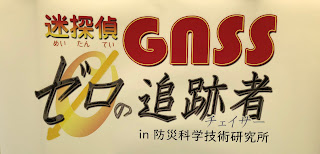recognizing "waterfall" with art and geoscience: a practice at an international school / アートと地球科学で「滝」をみる 〜インターナショナルスクールでの実践〜
Thoroughly supported by the artist Aki Sahoko and the art teacher Jennifer de Calvillo, there was an opportunity for us (PI: hayakawa) to have a talk on the interaction of art and geoscience at an art class in the elementary school of Osaka International School.
アーティストの安芸早穂子さん、美術教諭のJennifer de Calvilloさんのご協力のもと、大阪インターナショナルスクール小学部の美術の授業で,アートと地球科学を織り交ぜたお話をさせていただく機会がありました。
From the viewpoint of science, the purpose of the geoscience study, methodological approaches including fieldwork, and the way of using the data obtained were outlined, and with some examples, the students are guided to understand the scientific procedures. From the viewpoint of art, after watching several expressions of 3D research data, the representation of one's images of water, mountains, rivers, oceans, etc. was challenged to be expressed as drawings.
サイエンスの観点からは,どういった目的で,どのような方法のフィールドワークがなされて,また取ったデータを使うのかを概観し,いくつかの事例を紹介して具体的に理解してもらいます。そしてアートの視点からは,研究成果として得られたデータの表現方法をいくつか見た上で,自身らがもつ水や山,川,海などのイメージの表象を,絵として表現することを試みます。
サイエンスの観点からは,どういった目的で,どのような方法のフィールドワークがなされて,また取ったデータを使うのかを概観し,いくつかの事例を紹介して具体的に理解してもらいます。そしてアートの視点からは,研究成果として得られたデータの表現方法をいくつか見た上で,自身らがもつ水や山,川,海などのイメージの表象を,絵として表現することを試みます。
The target is equivalent to the 3rd to 4th-grade elementary school in Japan.
The chief theme picked up is "waterfall".
対象は,日本の小学校3〜4年生相当。
The chief theme picked up is "waterfall".
対象は,日本の小学校3〜4年生相当。
取り上げた主なテーマは,「滝」です。

The building of Osaka International School is a modern and open architecture.
大阪インターナショナルスクールはモダンで開放的な建築です。

It is a so-called "art room" of a school. Unlike those in typical Japanese schools, various "decorations" are presented to enhance one's inspiration even just staying in the room. Projectors are also available.
いわゆる学校の「美術室」ですが,いろいろな「飾り」が散りばめられていて,その部屋にいるだけでも多様なインスピレーションを得られる仕組みになっています。プロジェクタも完備。

Waterfall expressed as "point cloud", obtained by a three-dimensional measurement. Here, the world is represented by "points". Also, the art teacher Jennifer explains the common characteristics with the drawing of "pointillism" in the 19th century.
3次元計測により「点群」として表現された滝。世界が「点」で表現されています。それと,19世紀の点描画を並べて,共通点を語るJennifer先生。

3D point cloud by terrestrial laser scanning of Choshi Ohtaki in Oirase Valley, Aomori Prefecture, northern Japan.
This model is marked as "Staff picked" in Sketchfab, and has received much attention from numerous people.
青森県奥入瀬渓谷・銚子大滝の地上レーザ測量による3次元点群。
実はこのモデル,SketchfabでもStaff pickedに取り上げられ,多くの方からの注目を浴びています。

An example of pointillism in the 19th century.
"A Sunday Afternoon on the Island of La Grande Jatte" (Georges Seurat, 1884-86)
19世紀の点描画の例。
『グランド・ジャット島の日曜日の午後』(ジョルジュ・スーラ,1884-86)
A personal computer and cardboards on the desk.
机の上にあるのはパソコンとダンボール。

Students manipulate the 3D model displayed on the computer.
3Dモデルをパソコンで表示したものを,実際に操作してグリグリ回して見ます。


Exploring the cardboard 3D models of an island and a waterfall created from the 3D measurement data. By watching and touching, they feel the shape of nature at their hand.
3次元データから作成した島や滝のダンボール立体モデル。みて,さわって,自然の造形を手元で感じます。

A "waterfall" made by Ms. Aki. When opening the cardboard box of Amazon, a waterfall flows out. Amazon in Amazon !!
安芸さんがつくった「滝」。アマゾンのダンボール箱を開くと,滝が流れ出てきます。Amazon in Amazon!!

One's image of a waterfall is drawn on a triangular paper. Some of the imagination is from the observation in outdoors while watching the flow of water. Paints and color pencils are NOT used – colors are given by grinding down natural items such as flowers and soil.
三角形の台紙に,各自がもつ滝のイメージを描いて行きます。実際に屋外に出て,水の流れを見ながら描いた部分も。絵の具や色えんぴつなどは実は使っていなくて,草花や土をすりつけて彩色しています。
****
The student's production will continue, and they will eventually be presented at the JpGU meeting next month.
Please look forward to it!
生徒みなさんのこの制作は,引き続きブラッシュアップされ,最終的に来月のJpGUで発表されます。
どうぞお楽しみに!
May 20, 2018 (Sun.) Poster session of "Collaboration and Co-creation between Geoscience and Art"
O07-P01 アートと地形学:滝の多彩なみかた
O07-P01 "Art and geomorphology: colorful recognition of waterfalls"
2018/5/20(日) 「地球科学とアートの協働・共創」ポスターセッション
O07-P01 アートと地形学:滝の多彩なみかた











